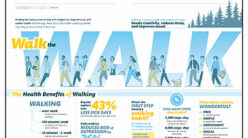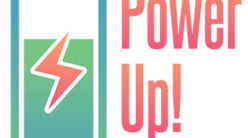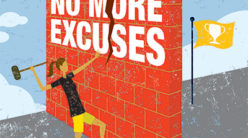One of the toughest things anyone can do is start a fitness program after not being active for some time. Once you make the commitment to yourself, where do you go and what do you do? You know that aerobic exercise is good for your heart and burns extra calories, but the last time you went running, it was painful. And you only want to tone up, not have big giant muscles like something on an ESPN workout program.
In an effective training program there are five major components. Together they form the backbone of your fitness plan.
Warm-up and Stretching
The benefits of a warm-up are to increase blood flow to the heart, muscles, ligaments, and tendons, and to increase body temperature. A warm-up is as simple as a leisurely stroll before your power walk or marching in place before you put your exercise video into the VCR. Warming up your body before exercise is as important as warming up your car before driving it in the dead of winter. It allows the muscles and connective tissue to become more pliable and stretch more easily. Stretching that is held gently (don’t bounce) for a few short seconds should also be included in the warm-up to further minimize the risk of an injury.
Cardiovascular/Aerobic Fitness
Most people think of aerobic exercise as high-impact jumping around that leaves you uncomfortably breathless. Nothing can be further from the truth. That old adage “no pain, no gain” should have been thrown out the window years ago. A good indicator of working out aerobically is that you should be perspiring moderately (barring high humidity and heat) and breathing heavier than usual, but still able to carry on a conversation.
There are many good reasons for exercising at a comfortable pace. By exercising at a pace that is within your limits, you reduce the likelihood of falling or sustaining an overuse injury. You’re also able to handle exercising for a longer period of time when it’s done moderately. Whether you run a mile or walk a mile, you’ll still burn about 100 calories (you just burn them faster when you run). But if you’re able to continue for longer when you walk, then you’ll burn more calories in the end.
We all have our certain spots to which fat just seems to cling. Heredity and genetics determine whether it will be your thighs, stomach, arms, or someplace else. The body uses these areas as fuel storage depots. Spot reducing doesn’t work, because that extra weight that is hanging over your belt can be eliminated only by burning off fat.
Trying to spot reduce is like pouring gas on your car tires to make the car move; you need to draw the gas from the tank for energy. Your body works the same way. You can firm up the underlying muscle with specific exercises, but you will still have the layer of fat on top. That fuel (fat) can be burned off only with aerobic exercise.
The one single perfect form of aerobic exercise to do is the one that you enjoy doing. If you hate to exercise in your house, then don’t run out and buy a treadmill for your basement. Chances are that you’ll never use it and it will only be a reminder of good intentions that have failed. Instead, focus on what you enjoy. If you like to be outdoors, then go for a brisk walk in your neighborhood or at a local park. (Many now have beautiful paths). Go for a bike ride with your kids, spouse, siblings, or parents.
If the great outdoors isn’t for you, rent an exercise video tape and work out in the climate-controlled comfort of your own home. Make a spot in your home for exercise, if that sounds like the perfect motivating tool, and make sure it’s bright, light, airy, and fun. Nothing is more dreadful than working out in a dark corner of a basement. Moving a TV and VCR in front of your treadmill or bike will also provide some pleasant entertainment and motivation to accompany your aerobic workout. The secret is to figure out what you enjoy doing so it’s something you look forward to.
Abdominal/Lower Back Strengthening
Besides giving a slender appearance, the muscles of the trunk are used to support your organs and the walls of the abdominal cavity. Keeping the four abdominal and three vertebral column muscles strong will help to give you better posture. It will also alleviate some of the discomforts associated with lower `back pain` by bracing and supporting the spine. There are several abdominal machines on the market right now that are quite good. One of the better ones looks almost like the bottom half of a rocking chair. This one also supports your head to almost eliminate neck strain. However, what they don’t do (which many of them claim) is burn fat. They are strictly for toning the underlying muscle.
Resistance/Weight Training
Many people are reluctant to train with weights because they mistakenly believe that toned muscle will turn to fat if they were to stop their program. This simply is not true. Just as a broken leg will atrophy while in a cast, a muscle that is not worked will shrink, but not turn to fat. Others don’t want to lift weights because they are afraid of bulking up and looking muscle-bound. The average person will never look like that from normal weight training. Weight training will not build huge muscles overnight, but long-term heavy weight lifting will slowly increase size.
Whether it’s called weight lifting, strength training, or toning, it will increase the density (or firmness) of the muscle. Resistance training can be accomplished several different ways.
Some people prefer to use weight machines that are self-contained with their own weights. Others prefer lifting free weights, also known as dumbells and barbells. While this method is less of an investment than a home machine, it also offers less variety and sometimes requires more time to reconfigure between exercises.
An alternative to free weights and machines is tubing. Several manufacturers are marketing resistance tubing that comes in several different styles, including those with handles, padded ankle straps, and door attachments. While these tubes are not made for conditioned athletes or those who are very strong, they are inexpensive and perfect for those just starting a program.
The upper body is composed of five major muscles or muscle groups, and the lower body is composed of three. A balanced routine will hit all of these areas at least once and no more than four times. These areas are:
- Bicep (front of arm)
- Tricep (back of arm)
- Quadriceps (front of thigh)
- Shoulders
- Gluteals (backside)
- Back
- Hamstrings (back of thigh)
- Chest
One of the most common mistakes made is working some areas three or four times and others just once or not at all. What does matter is that you work everything equally and don’t overwork some areas while underworking others, causing a muscular imbalance that could lead to joint strain and possibly an injury down the road. The exception to this is the quadriceps or the front of the thigh. Since there are two muscles being worked in the back of the leg (the gluteal and the hamstring), this muscle needs to be worked twice to compensate.
Flexibility Stretching/Cool down
Like many other aspects of fitness, flexibility can be misunderstood and pursued improperly. Although people know that they should stretch and do so with the best of intentions, they sometimes stretch incorrectly and occasionally injure themselves. You should work on increasing flexibility, holding stretches for 15-60 seconds, stretching a little farther as the muscle relaxes. When done correctly, stretching is not painful.
Lack of motivation has to be the single most popular reason for not exercising. You must focus on the positive effects of exercising and not on your negative feelings. If exercising is something you dread, it will become something that you hate. Say to yourself “I get to exercise today!” instead of “I have to exercise today.” Decide for yourself if you enjoy the camaraderie of a health club, the intimacy of a small aerobics studio, or the privacy of working out at home to fitness videos. Be open to new ideas and don’t be afraid to try new things.
Putting it all together so that it works doesn’t look as hard as it did. One of the things I am always telling my clients is to be patient. You didn’t fall out of shape in three weeks, so don’t expect to return to your college physique in three weeks either. Have realistic goals and don’t feel that you have to weigh 110 pounds and run the Boston marathon to be successful in your program. Make exercise fun for you, and don’t give up if a hectic schedule causes you to miss a few sessions. Remember, fitness is serious fun!






